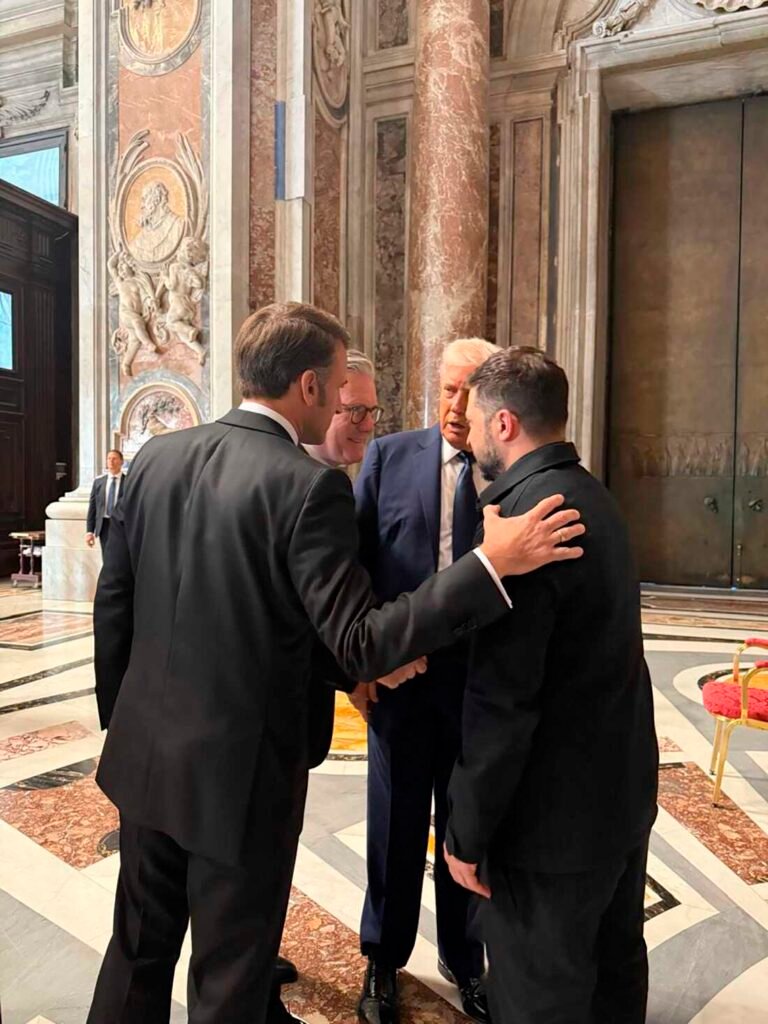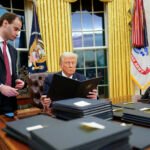VATICAN CITY — The world paused to honor Pope Francis, who passed away at age 88, in a deeply moving funeral Mass held in St. Peter’s Square on April 26, 2025. An estimated 400,000 mourners, including U.S. President Donald Trump, Ukraine’s Volodymyr Zelensky, and other global leaders, gathered under a somber Roman sky to bid farewell to a pontiff whose 12-year papacy left an indelible mark on the Catholic Church and beyond. The ceremony, steeped in centuries-old Vatican tradition, was both a celebration of Francis’ legacy and a moment of global unity, with millions watching via live broadcasts.
A Pontiff’s Final Journey
The funeral Mass, presided over by Cardinal Giovanni Battista Re, Dean of the College of Cardinals, began at 9:30 a.m. local time. Pope Francis’ simple cypress wood coffin, inscribed with his name, birth date (December 17, 1936), and death date, was carried through St. Peter’s Square by pallbearers as a choir sang the haunting strains of the *Salve Regina*. The crowd, a sea of tearful faces clutching rosaries and photos of the late pope, fell silent as the coffin was placed before the altar.
In the days leading up to the funeral, over 250,000 pilgrims and dignitaries had filed through St. Peter’s Basilica to pay their respects during a public viewing. The Vatican reported that the line stretched over a mile at times, with mourners waiting up to 12 hours. Following the Mass, Francis’ coffin was sealed in a zinc-lined casket, then a lead one, in a private ceremony attended by close aides and cardinals. The final act was his burial in the crypt of Santa Maria Maggiore Basilica, one of Rome’s four major basilicas, honoring his request for a resting place outside the Vatican—a nod to his humility and devotion to the Virgin Mary.
“Pope Francis was a shepherd who walked among his flock, a voice for the voiceless. His legacy will endure in the hearts of millions.”
Cardinal Pietro Parolin, Vatican Secretary of State
The guest list read like a who’s who of global leadership: Italy’s Prime Minister Giorgia Meloni, Spain’s King Felipe VI, France’s President Emmanuel Macron, and representatives from over 120 countries. The presence of leaders from diverse faiths, including Muslim and Jewish dignitaries, reflected Francis’ commitment to interfaith dialogue. Security was unprecedented, with 10,000 Italian police and Vatican guards deployed, and airspace over Rome restricted.
Trump’s Presence: Diplomacy and Politics
Among the mourners, U.S. President Donald Trump stood out, his attendance a focal point for media and onlookers alike. Arriving in Rome with a high-level U.S. delegation—reportedly including Secretary of State Mike Pompeo and First Lady Melania Trump—Trump’s presence carried both diplomatic weight and political undertones, given his complex history with Pope Francis and his current domestic challenges.
A Fraught History
Trump and Francis had a well-documented rocky relationship. In 2016, during Trump’s first presidential campaign, Francis famously remarked that building walls, like Trump’s proposed border wall, was “not Christian,” prompting a sharp retort from Trump, who called the pope’s comments “disgraceful” and suggested the Vatican was out of touch. The feud simmered, with Francis later criticizing policies aligned with Trump’s agenda, such as restrictive immigration measures and climate change skepticism. However, by 2020, Trump softened his stance, praising Francis’ humanitarian efforts, particularly his work with refugees, during a Vatican visit.
At the funeral, Trump was seen paying his respects quietly, seated among other heads of state. He reportedly offered condolences to Vatican officials, emphasizing the U.S.’s commitment to religious freedom, a cornerstone of his administration’s foreign policy. A brief audience with Cardinal Pietro Parolin was noted, though details remained private, with the Vatican prioritizing the funeral’s solemnity over diplomatic fanfare.
Media and Public Reaction
Trump’s attendance dominated headlines and social media, particularly on X, where reactions ranged from praise to skepticism. Supporters lauded his decision to attend, with one X post reading, “President Trump shows class and respect for a global icon, representing America proudly.” Critics, however, saw it as a calculated move to shift focus from domestic woes, with another post stating, “Trump’s at the Vatican while his tariffs tank the economy. Convenient photo-op.” Recent polls show Trump’s approval rating at 47%, with 53% disapproving, particularly on immigration and economic policy, adding context to the criticism.
Trump’s Domestic Context
Trump’s Vatican trip came amid mounting challenges at home. His tariff policies, aimed at bolstering U.S. manufacturing, have drawn ire for causing economic strain, with reports suggesting ally Elon Musk is losing $1 billion daily. The administration’s immigration crackdowns, including a reversed policy on international student visas, have sparked legal battles. Most recently, the FBI’s arrest of Milwaukee Judge Hannah Dugan for allegedly aiding an undocumented immigrant has fueled tensions with the judiciary, with Trump defending the move as “upholding the law.”
Strategic Opportunity
The funeral offered Trump a rare platform to engage with world leaders at a time when his foreign policy is under scrutiny. His recent claim that Russia and Ukraine are nearing a peace deal, following talks between his envoy and Vladimir Putin, was a talking point in Rome, though no concrete progress was announced. Trump’s interactions with leaders like Zelensky and Meloni were closely watched, with speculation about sideline discussions on trade, security, and NATO. The Vatican’s neutral stance ensured no formal summits occurred, but Trump’s presence reinforced his image as a global player.

Analysts suggest the visit was partly strategic, aimed at countering narratives of domestic turmoil. With his administration facing backlash over economic policies and judicial conflicts, the funeral allowed Trump to project statesmanship. However, his somber demeanor—captured in photos as he stood alongside other leaders—did little to quell critics, who pointed to the ideological divide between his policies and Francis’ teachings on migration and climate change.
A Legacy in Contrast
Pope Francis’ funeral was a moment to reflect on his transformative papacy. Born Jorge Mario Bergoglio in Argentina, he was the first Jesuit and Latin American pope, known for his simplicity—living in a modest Vatican guesthouse—and his bold reforms. His encyclicals, like *Laudato Si’* on environmental care, and his outreach to the poor and marginalized reshaped the Church’s global image. His calls for compassion toward migrants directly challenged policies like Trump’s, creating a stark contrast at the funeral.
As the Vatican prepares for a conclave to elect a new pope, speculation is rife about Francis’ successor. Will the next pontiff continue his progressive push or align more with conservative leaders like Trump on issues like traditional family values? The question hung over St. Peter’s Square, where mourners prayed for guidance.
Looking Ahead
The funeral was a rare moment of global unity, bringing together leaders and faithful to honor a man who bridged divides. For Trump, it was a chance to navigate the delicate balance of diplomacy and politics, reinforcing his presence on the world stage while facing challenges at home. As the Catholic Church enters a new chapter, and Trump’s second term unfolds, the echoes of Francis’ message—humility, compassion, and unity—resonate as a challenge to leaders worldwide.



